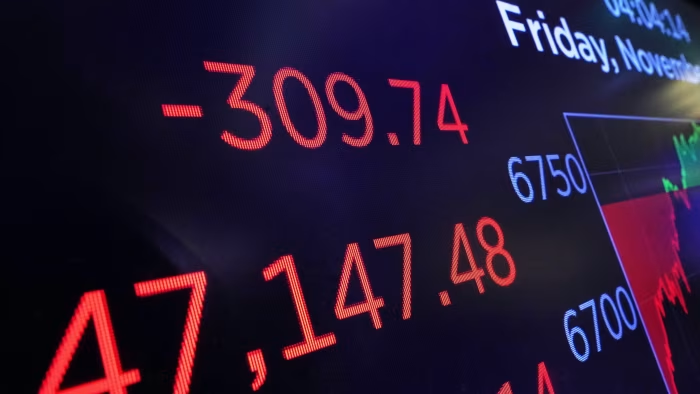Stay informed with free updates
Simply sign up to the US interest rates myFT Digest — delivered directly to your inbox.
Wall Street has reined in bets on a third straight interest rate cut as the US Federal Reserve’s hawks voice concerns that inflation remains too high to justify lower borrowing costs.
The probability of another quarter point cut, implied by market prices, has fallen from nearly 70 per cent to 40 per cent over the past week after several members of the rate-setting Federal Open Market Committee made plain their lack of support for action at the next meeting on December 10.
The shift — in which investors have also pared back expectations for more cuts in 2026 — contributed to a sell-off in equities and an uptick in two-year Treasury yields this week, amid investor jitters over valuations in AI stocks.
“It is impossible to know which way this goes,” said Krishna Guha, vice-chair at Evercore ISI, on the December Fed vote.
The Fed has lowered borrowing costs by a quarter point at each of its previous two policy meetings on the back of signs that the US labour market is weakening and President Donald Trump’s tariffs are having less impact on inflation than many feared.
But the October vote saw a rare three-way split, with Fed governor and Trump ally Stephen Miran supporting the US president’s calls for lower rates by backing a 50 basis point cut, while Kansas City Fed president Jeff Schmid wanted rates held.
Fed chair Jay Powell warned after the vote that a December cut was not a “foregone conclusion”, while several regional Fed officials without a vote said later that they disagreed with last month’s decision.
“To our ear, the [December] meeting outcome is shaping up to be just as contentious as Powell portrayed in October’s press conference,” said Jonathan Millar, economist at Barclays.
Schmid signalled on Friday that he would continue to support keeping the US central bank’s benchmark rate in a 3.75-4 per cent range, saying neither market nor economic conditions suggested rates were too high.
Susan Collins, the Boston Fed head who is seen as closer to the centre of the FOMC, said earlier in the week that it would “likely be appropriate to keep policy rates at the current level for some time”.
Minneapolis Fed president Neel Kashkari, who — unlike Collins and Schmid — does not currently have a vote on Fed policy, on Thursday pivoted from supporting another cut, saying he would also probably argue in favour of a December hold.
Diane Swonk, chief US economist at KPMG, said there had been “a lot of wishful hoping” among investors that the release of downbeat economic data would force the Fed to cut.
The Bureau of Labor Statistics will publish the September jobs report next Thursday but it remains unclear whether figures on inflation and the labour market for October will be published at all.
“What we’ve really seen is that there is a lot of reticence to cutting aggressively given all of the unknowns out there,” said Swonk. “There is also some inflation coming from the services sector that has just not been eradicated.”
While September’s rise in the consumer price index was weaker than anticipated at 3 per cent year-on-year, price growth remains in excess of the Fed’s 2 per cent inflation goal.
Minutes of the October vote, set for release on Wednesday, could reveal more about divisions within the FOMC.
Whether or not the US central bank opts to end the year with a cut, some analysts say the Fed chair will face a tricky balancing act to minimise the number of dissents.
Doves on the Fed’s board — Chris Waller, Michelle Bowman and Miran, all of whom were appointed by Trump — would probably vote against a decision to hold, raising the prospect of three governors dissenting for the first time since 1988.
“Absent miraculous clarification from limited data, Powell is in a rough spot,” said Guha.
